Summer Reading: Best Science-y Books for Kids
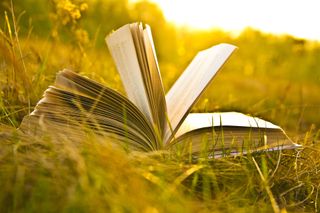
A bevy of books
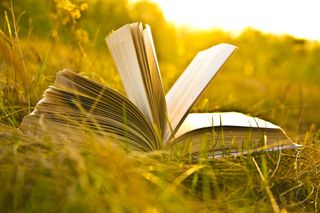
Long, lazy summer days are perfect for curling up in the shade or in an air-conditioned retreat indoors with a good book. And there are plenty of options for kids that will stir their interest in the natural world and spark their curiosity about the ways that scientists investigate everything from plankton to planets, unraveling the secrets of how things work from the inside out.
Exciting science-themed stories can be found in fact and fiction — from biographies of intrepid explorers and inventors to novels about space exploration among distant worlds; to photographic essays about conservation and biodiversity; to comics and graphic tales about everything from paleontology to new species discovery.
Here are some recommendations that will perk up any summer reading list. For even more suggestions, check out from the National Science Teachers of America (NSTA) Outstanding Science Trade Books for Students K–12: 2016 and the American Association for the Advancement of Science (AAAS) Summer Reading Lists for Kids (2015).
Paleontology
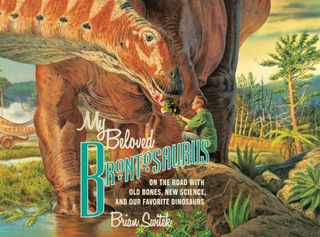
There's a lot to love about dinosaurs, and budding paleontologists will delight in digging up tidbits about their favorites — whether they favor feathered tyrannosaurs or towering titanosaurs.
Stone Girl Bone Girl: The Story of Mary Anning. Laurence Anholt (author) and Sheila Moxley (illustrator). Recommended for ages 5 to 9.
For beginning readers, this is a perfect introduction to acclaimed 19th century fossil hunter Mary Anning, who found her first fossil skeleton of an ichthyosaur when she was only 12 years old. Folk-art style illustrations help to tell the tale of the girl whose discoveries proved invaluable to the developing science of paleontology.
Science Comics: Dinosaurs. MK Reed (author) and Joe Flood (illustrator). Recommended for ages 9 to 13.
The history of paleontology, in comics format! Part of a series of non-fiction comics about science topics, Dinosaurs uses appealing illustrations to cover 150 years of the most significant dinosaur discoveries: the people who found, described and displayed the fossils, the biology and evolution of dinosaurs themselves, and how our understanding of dinosaurs has changed over time.
My Beloved Brontosaurus: On the Road with Old Bones, New Science, and Our Favorite Dinosaurs. Brian Switek. Recommended for ages 14 and up.
Some are intrigued by dinosaurs during childhood but outgrow their fascination with these ancient beasts as they grow older. But for science writer Brian Switek, the youthful obsession never went away. This engaging account describes how an early interest in paleontology — and in one dinosaur in particular — inspired a lifelong commitment, interweaving personal fossil encounters with the latest discoveries that define the study of dinosaurs today.
Plants, animals and ecology

The world around us is teeming with life — in the oceans, in the skies, and on land. These books will offer glimpses into some of the ways that humans interact with the plants, animals, and ecosystems around them.
Plastic Ahoy! Investigating the Great Pacific Garbage Patch. Patricia Newman. Recommended for ages 8 to 14.
A team of scientists explores an immense floating island in the Pacific Ocean made up of millions of pieces of discarded plastic. Readers will follow the researchers as they study the impact of plastic trash on the ocean and marine organisms.
Wild at Heart: Mustangs and the Young People Fighting to Save Them. Terri Farley (author) and Melissa Farlow (photographer). Recommended for ages 10 to 14.
"Wild" horses roaming the ranges today aren't native to North America, but they have long been considered iconic figures in the landscape of the American West. Writer Terri Farley delivers an introduction to wild mustang history, and presents some of the challenges they face from agencies that see them as pests.
Primates: The Fearless Science of Jane Goodall, Dian Fossey, and Biruté Galdikas. Jim Ottaviani (writer), Maris Wicks (illustrator). Recommended for ages 12 to 18.
Appealing illustrations and superb storytelling weave a highly entertaining nonfiction graphic account of three groundbreaking primate researchers. Through their work, these women redefined the study of primates and in doing so changed the way scientists understand the habits and behaviors of our closest living relatives.
Human biology
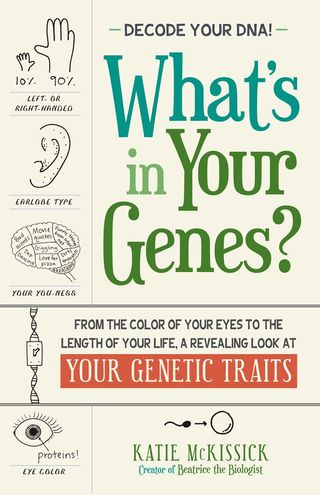
Inside and out, the human body is a marvelous machine that's full of surprises. There's always something new to learn about its construction, its microbial inhabitants, how it operates from day to day and how all of its parts — large and small — work together to keep us alive, functioning and healthy.
Human Body Theater. Maris Wicks. Recommended for ages 10 to 14.
In this humorously illustrated biology guide staged in a theaterlike setting, a skeleton master of ceremonies introduces the systems and senses in the human body, layer by layer. Organs take turns appearing in the spotlight to describe how our bodies are constructed and how all of the parts choreograph and coordinate efforts to ensure everything runs smoothly — inside and out.
What's in Your Genes?: From the Color of Your Eyes to the Length of Your Life, a Revealing Look at Your Genetic Traits. Katie McKissick. Recommended for ages 13 and up.
Written by a former high-school biology teacher, "What's in Your Genes?" is an accessible, fun overview of the fascinating world of genetics. With language that's easy to follow and understand, it looks at how scientists discovered and study DNA and explains the workings of those mysterious bits of coded data in all of our cells that determine each of the traits that make us who we are.
It's Perfectly Normal: Changing Bodies, Growing Up, Sex, and Sexual Health (The Family Library): Robie H. Harris and Michael Emberley. Recommended for ages 13 and up.
This invaluable resource is chock-full of practical information about puberty and sexuality, addressing how adolescent bodies change and providing answers to common questions about sexual health, orientation and activity that accompany these physical changes. The recently updated edition incorporates discussion of gender identity, sexting and internet safety.
Space
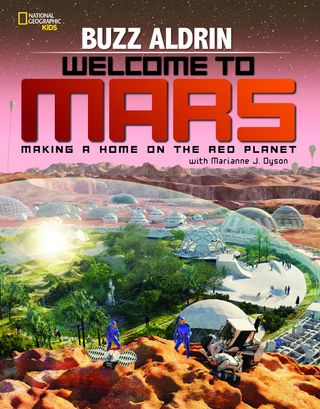
Stargazers will be over the moon for books offering a peek behind the scenes of space agencies and missions that explore neighboring bodies in our own solar system and peer at distant galaxies, nebulas, black holes and other fascinating objects that populate the known universe.
Welcome to Mars: Making a Home on the Red Planet. Buzz Aldrin. Recommended for ages 8 to 12.
What would it take to transform Mars into a place where people could live? Astronaut Buzz Aldrin describes how past and present missions to Mars have helped us to understand the Red Planet, and then outlines the steps that might one day allow humans to visit Mars and eventually settle there.
Space! The Universe as You've Never Seen It Before. DK. Recommended for ages 10 to 17.
The universe is teeming with wonders and so is this book, which offers a wealth of space facts alongside stunning NASA photographs, colorful infographics and 3D models of cosmic bodies. From stellar explosions to planetary formation, the endlessly dynamic activities of objects in space — how they're formed, how they interact and how they can be destroyed — are beautifully presented and explained in a format that will appeal to a wide range of ages.
Packing for Mars: The Curious Science of Life in the Void. Mary Roach. Recommended for ages 14 and up.
Those who appreciate a humorous approach to the science of space travel will enjoy Roach's unique and highly entertaining perspective, as she investigates the practical questions scientists and astronauts confront when preparing for a mission. She introduces the reader to a number of simulations that astronauts-in-training undergo, which may seem bizarre, but are uniquely suited to test the conditions they could one day face, far from Earth.
General science interest
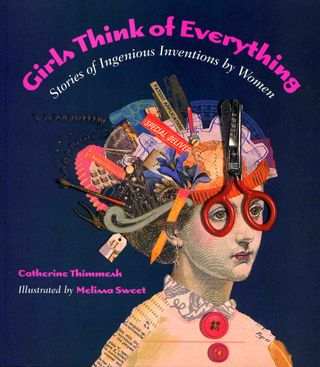
Science is everywhere and in everything all around us, and these books on general science topics will intrigue and encourage readers to look more closely at the world and to consider their place in it.
So, You Want to Work with the Ancient and Recent Dead?: Unearthing Careers from Paleontology to Forensic Science (Be What You Want). J. M. Bedell. Recommended for ages 8 to 12.
Many areas of science involve studying things that are no longer living: from paleontology and archaeology to forensics and astronomical investigation of "dead" stars and planets. Profiles of professionals in these fields and interviews with young enthusiasts introduce a wide range of opportunities for working with the dead, supplemented by resources for finding out more and for getting started.
Girls Think of Everything: Stories of Ingenious Inventions by Women. Catherine Thimmesh (writer), Melissa Sweet (illustrator). Recommended for ages 9 to 13.
This collection of biographic profiles presents women (and girls) whose names might be unfamiliar, even if their inventions are well-known. The creativity and hard work of these inventors — who gave the world a diverse range of products, from windshield wipers to NASA "space bumpers" — is celebrated in text and artwork, and encourages young women to develop unique and game-changing inventions of their own.
AsapSCIENCE: Answers to the World's Weirdest Questions, Most Persistent Rumors, and Unexplained Phenomena. Mitchell Moffit and Greg Brown. Recommended for ages 13 and up.
From the creators of the popular YouTube channel AsapSCIENCE comes this immensely readable collection, posing deceptively simple questions that arise in everyday life — like what causes brain freeze and why we get hiccups — and then answering them using principles from biology, chemistry and physics. In the words of Bill Nye ("The Science Guy"), "Science is big fun. The ASAP guys get that."
Science-themed fiction
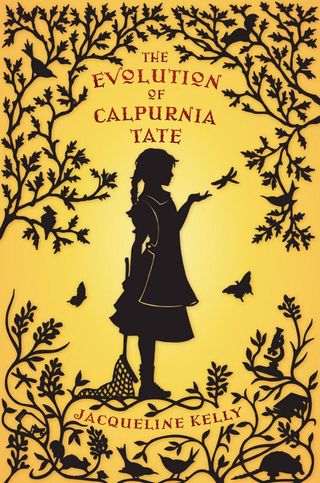
Even fiction-lovers can still appreciate a healthy dose of science served up with their stories. Here are some examples of books that seamlessly integrate real-world science with fictional characters and narratives.
Lunch Walks Among Us. Jim Benton. Recommended for ages 7 to 10.
A young girl who loves being a "mad scientist" experiments with transforming herself to better fit in with classmates who think she's a weirdo. But when danger threatens the school, everyone learns to appreciate the quirks that make her unique.
The Evolution of Calpurnia Tate. Jacqueline Kelly. Recommended for ages 10 to 13. Observing differences between types of grasshoppers in her backyard leads a young girl living in 1899 to delve deeper into investigating and understanding the natural world.
Brendan Buckley's Universe and Everything In It. Sundee T. Frazier. Recommended for ages 10 and up.
A biracial boy with a passion for science keeps a notebook where he records his observations and inquiries. But he encounters some of the biggest questions of his young life when he unexpectedly meets his estranged grandfather — a fellow rock-collecting enthusiast — for the first time, and confronts the racism that divided his family.
Last of the Sandwalkers. Jay Hosler. Recommended for ages 12 and up.
What happens when a cartoonist who is also an entomologist pens a graphic novel about beetle scientists and explorers on the verge of uncovering a terrible secret about the world outside of their isolated community? You get gorgeous art and a suspenseful story with characters that are compelling and endearing and will likely teach you a thing or two about insect biology.
The Neptune Project. Polly Holyoke. Recommended for ages 13 and up.
The daughter of a marine biologist discovers that she has been genetically altered to survive in the ocean, as part of an experiment on a group of children destined to be the first individuals to colonize the deep seas and build a safer future for humanity.
Sign up for the Live Science daily newsletter now
Get the world’s most fascinating discoveries delivered straight to your inbox.

Mindy Weisberger is an editor at Scholastic and a former Live Science channel editor and senior writer. She has reported on general science, covering climate change, paleontology, biology, and space. Mindy studied film at Columbia University; prior to Live Science she produced, wrote and directed media for the American Museum of Natural History in New York City. Her videos about dinosaurs, astrophysics, biodiversity and evolution appear in museums and science centers worldwide, earning awards such as the CINE Golden Eagle and the Communicator Award of Excellence. Her writing has also appeared in Scientific American, The Washington Post and How It Works Magazine.
